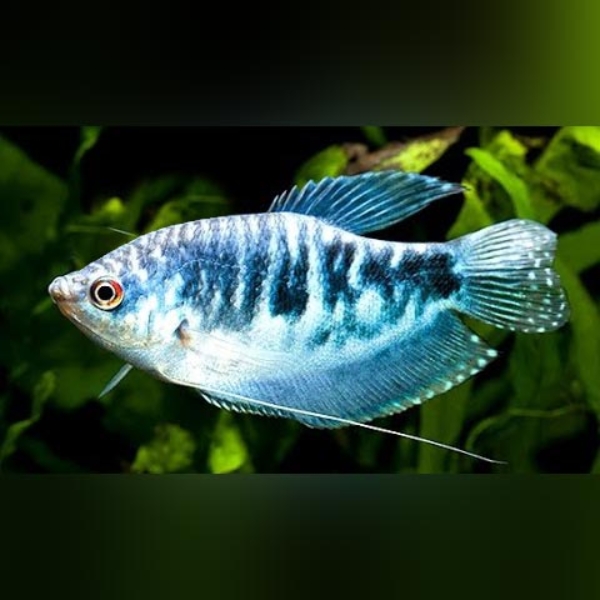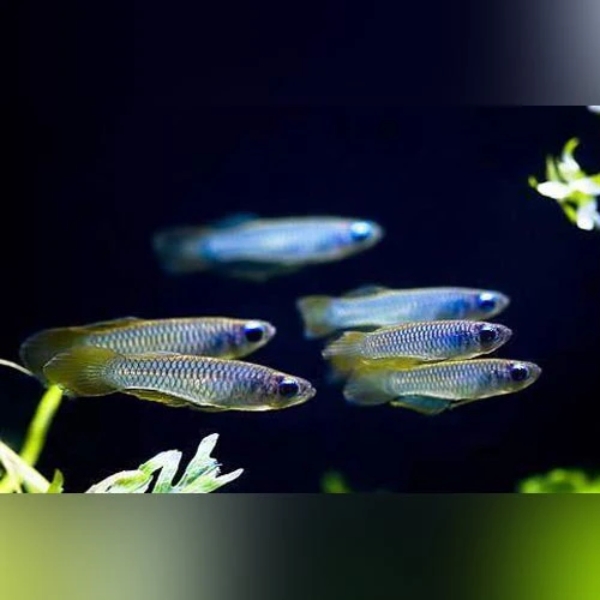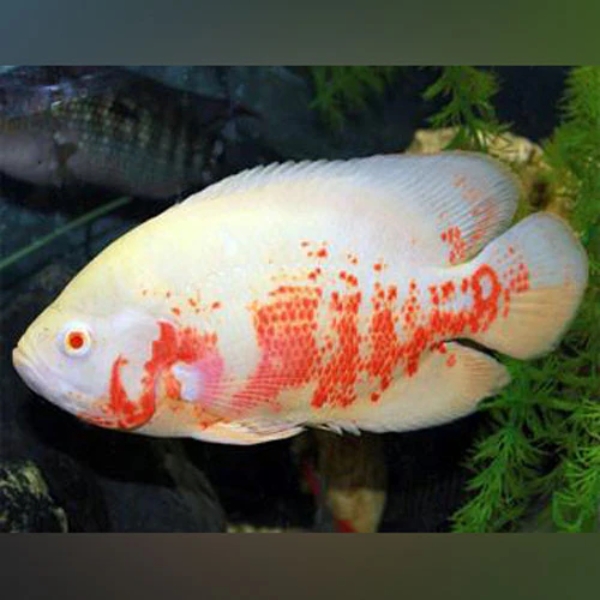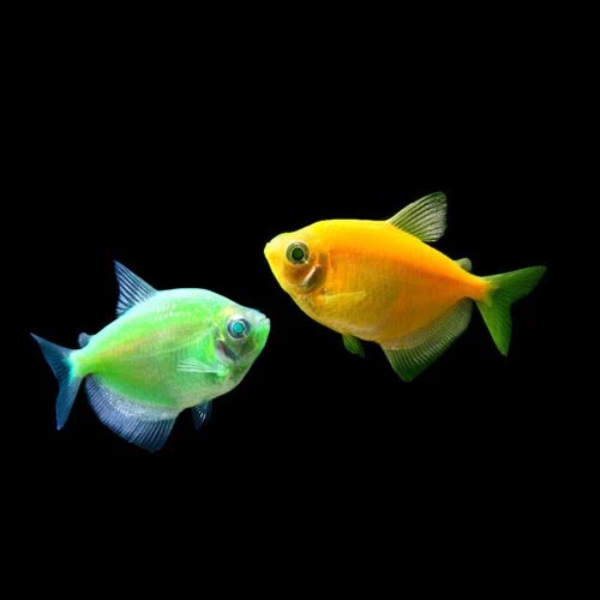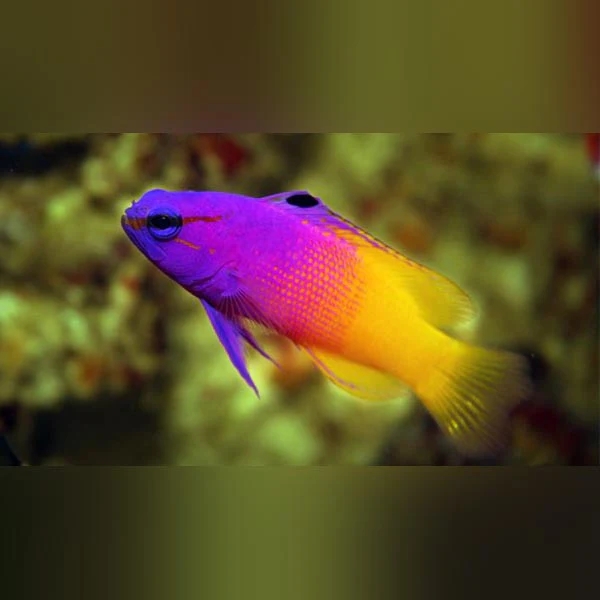Are you thinking of adding a graceful and eye-catching fish to your aquarium? Opaline Gourami might just be the perfect choice! This striking freshwater fish, with its shimmering blue hues and tranquil demeanor, has captured the attention of fish enthusiasts all over the world. But before bringing one into your tank, there are a few things you need to know about their care, behavior, and tank requirements. Let’s dive into everything related to Opaline Gourami to ensure your fish thrives and brings a touch of elegance to your aquarium!
Table of Contents
ToggleOpaline Gourami Feature
Appearance
The Opaline Gourami is known for its shimmering, iridescent blue body, with darker marbled patterns running along its sides. This unique color pattern makes it stand out in any aquarium, catching and reflecting light in the most mesmerizing way. While their base color is often blue, slight variations can give them a more greenish or silvery tone, depending on lighting and water conditions.
Size and Lifespan
Growing up to 6 inches (15 cm) in length, the Opaline Gourami is a medium-sized fish that fits well in most home aquariums. With proper care, they can live for 4 to 6 years, making them a long-term companion for dedicated fishkeepers.
Sexual Dimorphism
Males and females can look quite similar, but males often have a slightly more pointed dorsal fin, and during breeding, males may display more vibrant colors. This makes them easier to identify if you’re looking to breed Opaline Gourami in your tank.
Natural Habitat and Origins
Native to Southeast Asia, particularly in countries like Thailand, Vietnam, and Cambodia, Opaline Gouramis are typically found in slow-moving waters such as swamps, ponds, and rice paddies. In the wild, they thrive in areas with plenty of vegetation and still waters. Knowing their origins helps in setting up a tank that mimics their natural environment, ensuring they feel comfortable and secure.
Ideal Tank Setup for Opaline Gourami
Tank Size
A minimum tank size of 30 gallons is recommended for a single Opaline Gourami. If you’re housing a group, especially males, you’ll need a larger tank to reduce territorial disputes. These fish love to explore, so a roomy tank with ample swimming space is ideal.
Water Parameters
Maintaining stable water conditions is essential for keeping your Opaline Gourami healthy. Aim for a water temperature between 75°F and 82°F (24°C to 28°C) with a pH level of 6.0 to 7.5. They thrive in slightly acidic to neutral water, so it’s important to keep the pH stable and avoid sudden fluctuations.
Decor and Substrate
These fish enjoy a well-decorated tank with plenty of hiding spots. Add live plants, driftwood, and caves to give them areas to explore and hide. A darker substrate like black sand or gravel can enhance the colors of the Opaline Gourami, making their iridescent blues stand out even more.
Diet and Feeding Habits
Opaline Gouramis are omnivorous, meaning they thrive on a varied diet of plant and animal matter. A good-quality flake or pellet food should be the base of their diet, supplemented with live or frozen foods such as brine shrimp, bloodworms, and daphnia. Vegetables like blanched spinach or zucchini can also be offered to balance their nutritional needs.
Feeding them twice a day is generally recommended, giving them just enough food that they can consume in a few minutes to avoid waste buildup in the tank.
Behavior and Temperament of Opaline Gourami
Social Interactions
Opaline Gouramis are generally peaceful but can become territorial, especially males during breeding or if kept in smaller tanks. Keeping them with other non-aggressive species is key to maintaining a harmonious environment. While they can live solo, they often enjoy the company of their own species, particularly in pairs or groups of females.
Compatibility with Other Fish
When selecting tank mates, choose fish that are peaceful and not too small, as Opaline Gourami may see tiny fish as food. Good companions include species like tetras, rasboras, and peaceful barbs. Avoid highly aggressive or fin-nipping species, as they may stress out your Gourami or cause harm.
Breeding Opaline Gourami
Breeding Opaline Gouramis is possible with the right setup, but it requires some preparation. The male builds a bubble nest at the surface of the water, using bubbles and plant matter. When ready to breed, the male will entice the female to the nest, where she lays her eggs, and the male fertilizes them.
Once the eggs are laid, it’s essential to remove the female, as the male will become protective and aggressive. The eggs hatch in about 24 to 48 hours, and the fry can be fed infusoria or liquid fry food until they’re large enough to consume small live foods.
Common Health Issues in Opaline Gourami
Like all aquarium fish, Opaline Gourami can be susceptible to certain diseases if their water quality is poor or if they’re stressed. Some common issues include:
- Ich: This parasitic disease causes white spots on the body and fins.
- Fin Rot: Often caused by poor water conditions, leading to the degradation of the fins.
- Bacterial Infections: Can result from injuries or unclean environments.
Keeping the tank clean, maintaining stable water parameters, and quarantining new fish before introducing them to the tank are essential steps in preventing these issues.
Opaline Gourami Care: Daily Routine and Maintenance
Caring for Opaline Gourami is relatively straightforward. Here are some daily and weekly tasks that will ensure your fish stays healthy:
Daily Tasks
- Feed them twice a day, offering a balanced diet.
- Observe their behavior and look for signs of stress or illness.
- Check the water temperature and other parameters like pH.
Weekly Maintenance
- Perform a 25% water change to keep the water fresh and reduce toxins.
- Clean any algae buildup on the tank walls and decorations.
- Trim live plants if needed and remove any dead or decaying plant matter.
Opaline Gourami Behavior: Signs of Stress
It’s important to recognize when your Opaline Gourami might be stressed. Signs of stress include:
- Hiding frequently or staying at the surface.
- Lethargy or lack of movement.
- Loss of appetite.
- Faded coloration or clamped fins.
If you notice any of these signs, test the water parameters immediately and address any issues. Overcrowding, improper water conditions, or aggressive tank mates can all contribute to stress.
Conclusion
Incorporating an Opaline Gourami into your aquarium is a fantastic way to add both beauty and character to your underwater world. With their shimmering blue colors, peaceful demeanor, and relatively easy care requirements, they’re a great choice for beginners and experienced aquarists alike. By providing them with a proper tank setup, a balanced diet, and good companions, your Opaline Gourami will thrive and become a stunning focal point in your aquarium.
Related products
Aquarium fishes
Aquarium fishes
Aquarium fishes
Aquarium fishes
Aquarium fishes

